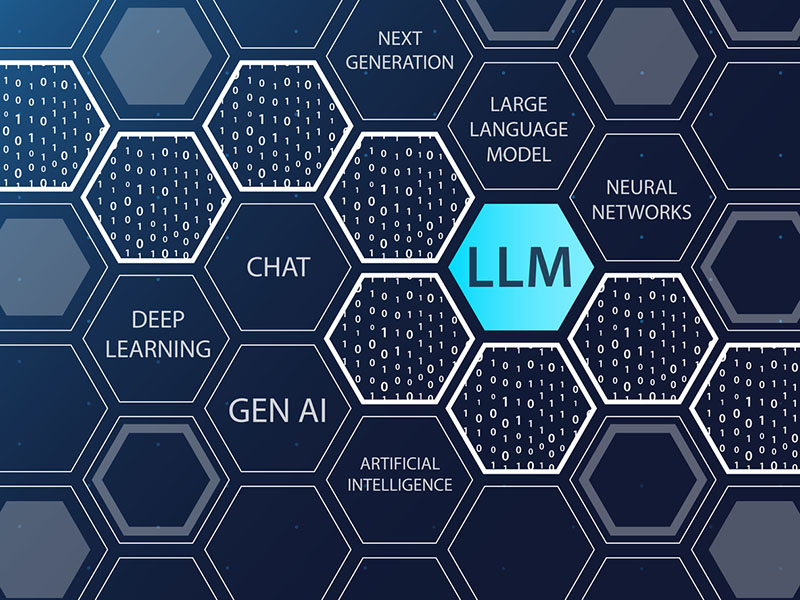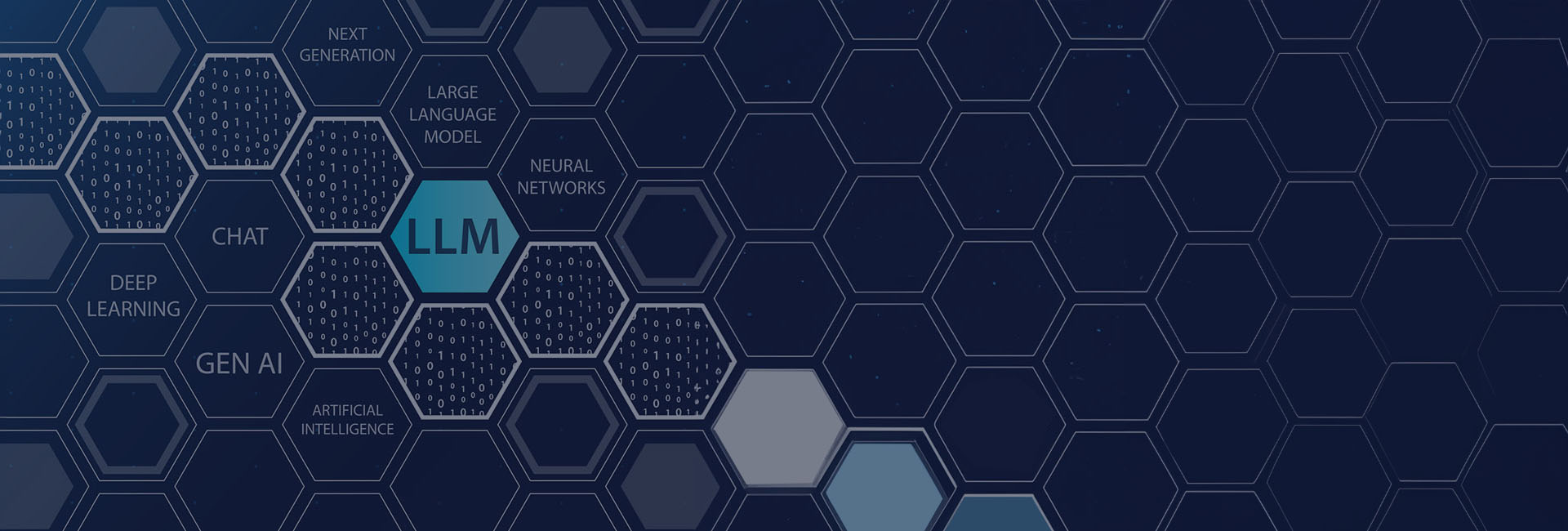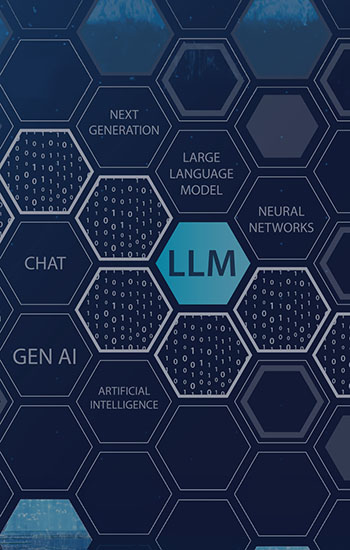In the ever-evolving landscape of technology, industries are constantly seeking ways to streamline operations, cut costs, and increase efficiency. One remarkable innovation that has emerged in recent years is Robotic Process Automation (RPA). RPA has become a game-changer for businesses looking to automate routine tasks and improve productivity. But what if we could take RPA to the next level by incorporating Language Model Models (LLMs) into the mix? In this blog, we will explore the concept of LLM-powered Robotic Process Automation and its potential to revolutionize industries across the globe.
The Rise of Robotic Process Automation (RPA)
Robotic Process Automation is the technology that allows businesses to automate repetitive and rule-based tasks using software bots or “robots." These bots are programmed to perform tasks just like a human would but with higher speed and accuracy. RPA has found its application in various industries, including finance, healthcare, customer service, and manufacturing. It has successfully reduced human errors, increased efficiency, and freed up employees to focus on more value-added tasks.
What are Large Language Models (LLMs)
Large Language Models (LLMs) are a type of artificial intelligence (AI) model that is designed to understand and generate human language. These models are built using deep learning techniques, particularly a type of neural network architecture called a transformer, which has proven highly effective for natural language processing tasks. LLMs have found applications in a wide range of fields, including natural language understanding, machine translation, chatbots, content generation, and more. They continue to be a subject of active research and development, with ongoing efforts to improve their capabilities and address their limitations.
Key characteristics of Large Language Models include:
Supply Chain Solutions:
- Size: LLMs are characterized by their large number of parameters, often in the billions. Models like GPT-3, GPT-4, and their variants are examples of LLMs. The large size allows them to learn and represent a vast amount of language data, making them capable of understanding and generating human-like text across a wide range of topics and languages.
- Pretraining and Fine-Tuning: LLMs are typically pre-trained on a massive corpus of text data from the internet, which helps them learn grammar, vocabulary, and world knowledge. After pretraining, they can be fine-tuned on specific tasks or domains to make them more specialized.
- Generative Abilities: LLMs can generate coherent and contextually relevant text. They can be used for tasks such as text generation, language translation, text summarization, and more.
- Natural Language Understanding: LLMs excel at natural language understanding tasks, such as sentiment analysis, text classification, and question-answering. They can comprehend and analyze text based on the context and provide meaningful responses.
- Versatility: LLMs are versatile and can be adapted to various language-related tasks with relatively little task-specific training.
- Ethical and Societal Considerations: The development and use of LLMs raise ethical and societal concerns, including the potential for misuse in generating fake news, biased content, and privacy implications.
- Computational Resources: Training and using LLMs require significant computational resources, including powerful hardware and access to large datasets. This makes them accessible primarily to well-funded organizations and researchers.
The Power of Large Language Models (LLMs)
Large Language Models, like GPT-3.5, have gained significant attention for their ability to understand and generate human-like text. These models are pre-trained on vast amounts of text data and can perform tasks such as language translation, and content generation, and even answer questions with remarkable accuracy. LLMs have been a transformative force in the fields of natural language processing and artificial intelligence.
The Synergy of LLMs and RPA
Imagine a scenario where RPA bots are not just programmed to perform predefined tasks but are also capable of understanding and generating human language. This is where the synergy of LLMs and RPA becomes a game-changer. Here are some ways in which LLM-powered RPA can revolutionize industries:
Enhanced Customer Support
LLM-powered RPA bots can engage with customers in natural, human-like conversations. They can understand customer queries, provide personalized responses, and even handle complex issues by accessing a vast knowledge base. This level of automation can significantly improve customer support services, reducing response times and ensuring consistent quality.
Intelligent Data Analysis
In industries like finance and healthcare, data analysis is a crucial task. LLM-powered RPA bots can not only analyze data but also generate insightful reports in a format that is easily understandable by humans. This can save organizations valuable time and resources while enabling data-driven decision-making.
Streamlined Document Processing
Many businesses deal with a large volume of documents daily. LLM-powered RPA bots can be trained to extract information from documents, classify them, and even generate summaries or reports based on the content. This can lead to faster document processing and reduced manual errors.
Multilingual Capabilities
For global businesses, language barriers can be a significant challenge. LLM-powered RPA bots can easily translate between languages, making it possible to communicate with customers, partners, and employees worldwide seamlessly.
Continuous Learning and Adaptation
LLMs are known for their ability to learn and adapt to new data. This means that LLM-powered RPA bots can continuously improve their performance over time. They can stay up-to-date with industry trends, regulations, and customer preferences, ensuring that they always deliver the highest level of service.
Get a free Proof Of Concept
Sign up for a free POC worth $5000 for Tangentia's TiA implementation. Book a discovery call with us today to find out more about what Tangentia Intelligent Automation solutions can do for you.
Challenges and Considerations
While LLM-powered RPA holds tremendous potential, there are some challenges and considerations to keep in mind:
- Data Privacy: Handling sensitive data requires robust security measures to protect customer information.
- Ethical Concerns: As LLMs generate human-like text, it's important to consider ethical implications, including the prevention of misinformation.
- Integration Complexity: Integrating LLMs with existing RPA systems may require significant effort and expertise.
The Future of LLM-Powered RPA
As technology continues to advance, the fusion of Language Model Models with Robotic Process Automation is poised to revolutionize industries. The ability to automate tasks with a high degree of language understanding and generation will unlock new levels of efficiency and productivity. Organizations that embrace LLM-powered RPA early on will likely gain a competitive advantage in their respective markets.
In conclusion, LLM-powered Robotic Process Automation represents a remarkable leap forward in the automation landscape. It has the potential to redefine the way businesses operate, interact with customers, and analyze data. While there are challenges to overcome, the benefits of this technology are too significant to ignore. As we move forward, it will be fascinating to witness the the transformative power of LLM-powered RPA in action and the industries that it reshapes along the way.
Integrating LLM with RPA
This integration empowers RPA solutions to comprehend and interact with natural language, enhancing their effectiveness in handling unstructured text data, communicating with humans, and making informed decisions. By choosing the right LLM, establishing API integration, and defining specific use cases, organizations can benefit from improved natural language understanding, text data extraction, content generation, and decision support within their automated processes. However, it's essential to prioritize security, compliance, error handling, and testing, as well as consider scalability and cost management. Regular maintenance and monitoring, along with documentation and training, are critical for ensuring a successful and sustainable LLM-RPA integration that keeps pace with evolving technology.
Here are some steps and considerations for integrating LLM with RPA:
- Understand the Use Case: Identify specific use cases where integrating LLM with RPA can provide value. LLMs can be used to extract information from unstructured text, generate human-like responses, perform data validation, assist with decision-making, and more.
- Choose the Right RPA Tool: Select an RPA tool that supports integrations and has the necessary capabilities to interact with an LLM through APIs or other integration methods. Popular RPA tools include UiPath, Automation Anywhere, and Blue Prism.
- Choose the Right LLM: There are several LLMs available, and you should select one that fits your needs. GPT-3 and similar models are popular choices.
- API Integration: LLMs are usually provided as APIs. You’ll need to integrate this API into your RPA solution. Most LLMs have SDKs or libraries available for various programming languages.
- Define Workflows: Create RPA workflows that involve interactions with the LLM. For example, you can use the LLM to extract data from documents, answer customer queries, or provide recommendations. Define the inputs and outputs of these workflows.
- Develop Integration Logic: Write code or configure the RPA tool to interact with the LLM's API. You may need to send requests to the LLM API with text inputs and process the responses. The integration logic will depend on your specific use case.
- Error Handling: Implement error handling and exception handling mechanisms to manage situations where the LLM may not provide a valid response or when there are connectivity issues.
- Test and Debug: Thoroughly test the integration to ensure it works as expected. Debug any issues and fine-tune the parameters and inputs for optimal performance.
- Security and Compliance: Ensure that you follow security best practices and comply with data protection regulations when integrating an LLM with RPA. Handle sensitive data with care and encrypt communication between the RPA tool and the LLM.
The integration of Large Language Models with Robotic Process Automation is a powerful combination that can supercharge automation efforts in various industries. Whether it's automating customer interactions, document analysis, or content generation, the fusion of these technologies opens up a world of possibilities. By leveraging the intelligence of LLMs, businesses can gain a competitive edge and unlock new levels of efficiency and productivity.
As the field of automation continues to evolve, integrating LLMs with RPA promises to be a transformative force in the way organizations operate and interact with their customers and data. It's a step toward a future where intelligent automation becomes the norm, not the exception.
About the Author

Meenu Shaji, a Junior RPA/AI Developer at Tangentia India Technologies, hails from Kerala and brings 1.5 years of hands-on experience with Automation Anywhere. Her project portfolio includes Symphony Freight, Symphony Mexico, and Popular Motors. Meenu holds an Automation Anywhere Masters certification and holds an IBM Process Mining Analyst Badge, reflecting her commitment to continuous learning. Through her blog, she shares practical insights, discoveries, and the latest trends in the dynamic landscape of RPA and AI.
Tangentia is an implementation expert in AI,RPA & Automation solutions & has partnerships with UiPath, Automation Anywhere & Blueprism.




